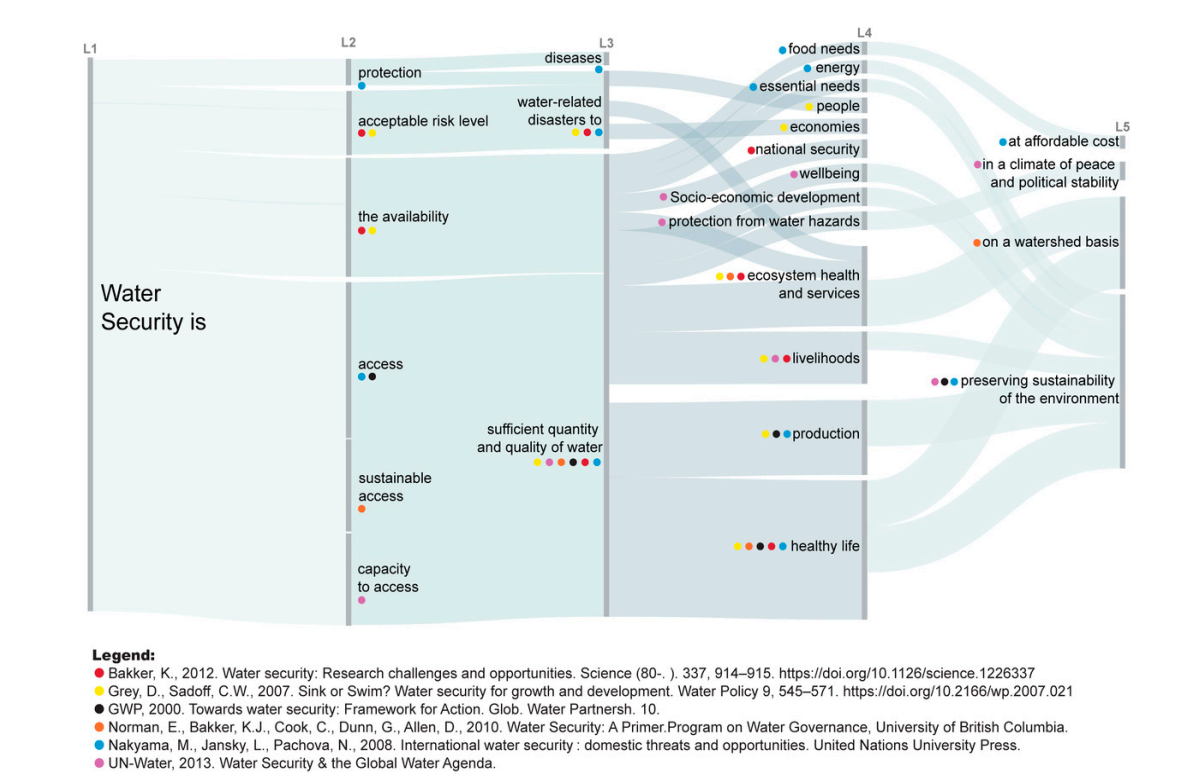Visualising complexity
ideas on how to find an academic journal suitable to your article


Semantic network
In an article on Water Security(WS) 1 we tried to find a way to compare different definition for the concept and to break down these definitions in parts for comparison. The result is something fairly close to semantic network 2. From the image below one can see for example how the basic meaning is defined differently. looking at L2 and L3 in the image below, it can be observed that the majority of definitions see WS as “access / availability of water in sufficient quantity and quality”. Other definitions frame it using risk concepts and define it as “acceptable risk level / protection from diseases and disasters”. L4 defines the systems that are supported by WS: most mentioned are a health life and ecosystems, followed by economic aspects (livelihood and production). Lastly L5 indicates other limits that should be considered such as sustainability, geographical limitations, costs.
2 A semantic network, or frame network is a knowledge base that represents semantic relations between concepts in a network. This is often used as a form of knowledge representation. It is a directed or undirected graph consisting of vertices, which represent concepts, and edges, which represent semantic relations between concepts,[1] mapping or connecting semantic fields. A semantic network may be instantiated as, for example, a graph database or a concept map. Typical standardized semantic networks are expressed as semantic triples.(Wikipedia)

Citation
@online{butte2024,
author = {Butte, Giacomo},
title = {Visualising Complexity},
date = {2024-09-04},
url = {https://www.giacomobutte.com/blog/visuals/},
langid = {en}
}